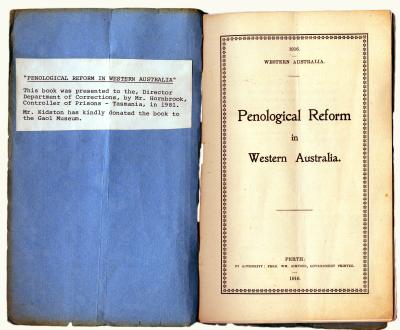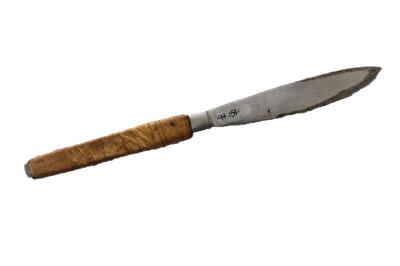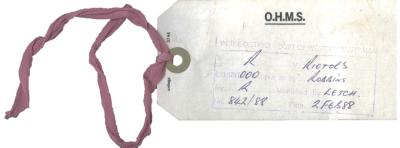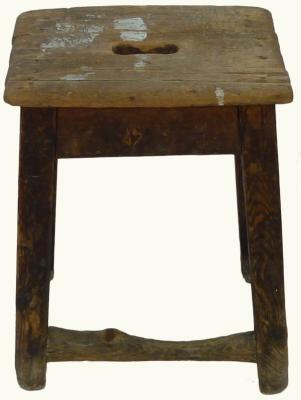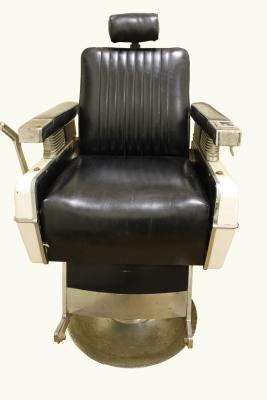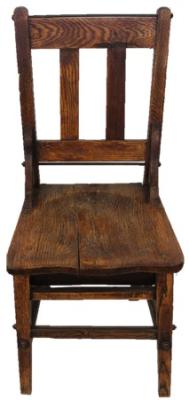LANDSCAPE PAINTING BY ARTIST JIM DEMPSTER
Large, landscape, acrylic painting depicting prospect of trees and bushes against a vivid sunset sky. The lower part of the painting contains trees and bushes across front foreground painted in grey and black. In the left-hand foreground is a tall tree with a grey foliage canopy. In the right-hand foreground is a large, tall tree with a grey and black foliage canopy highlighted in white. The ground behind the trees is tinged with pink. Black trees and bushes can be seen across the horizon. Upper part of the painting consists of vivid evening sky painted in dark blue, white, yellow and brown tints, which acts as a backdrop to the top parts of trees. A signature is painted in light blue in the bottom right-hand corner, ‘Jim Dempster’. Painting on panel of 5mm Masonite board.
Provenanced to Fremantle Prison
Details
Details
In 1978 Steve Culley began teaching art classes at Fremantle Prison, soon accompanied by David Wroth and Lindsey Pow. The popularity of their art program can be gauged by the number of prisoners who enrolled; more than 2,000 students within the first five years. Initially these art classes were for Aboriginal prisoners only, but as their popularity grew the classes were opened up to other prisoners, and were moved into a larger space in the Assessment Centre. The Assessment Centre was considered secure enough that prisoners could come and go freely, but when the Prison took back this space two years later, the art classes were moved into the Main Cell Block, behind the Catholic Chapel.
This painting is in the Carrolup style, a style of painting which originated from a Native Settlement of the same name in the South West of Western Australia. It was first established in 1915 but closed in 1922. In 1940 it was reopened as a farm training school for Aboriginal boys under the Aboriginal Protection Act. In 1945 the school’s headmaster Noel White, and his wife Lily, established educational programs in art and music for the pupils. The art produced by the children became famous in Australia and overseas, and many pupils went on to become established artists.
Mr White developed a rapport with the children at Carrolup, and encouraged them to draw what they saw whilst on nature rambles. One student said, “The native children in the past wasn’t given a chance to learn, but since Mr White took over the teaching at Carrolup we are now getting people to respect us and our drawings”.
Carrolup was closed down by the Department of Native Affairs in 1951, viewed by many as a victim of its own success. Unfortunately many former students of the school later found themselves behind bars in Fremantle Prison, and the Carrolup art style became a common theme in prisoner art.
Bureaucracy, in one form or another, was mainly responsible for artworks being left behind when Fremantle Prison closed in 1991 and prisoners were moved to Casuarina. If a prisoner created or acquired something during their incarceration, which they did not have when they were first admitted to prison, they had to apply for that article to be added to their record, so that such items could be taken with them when they left or were transferred. It is likely that a number of the artworks now in the Fremantle Prison Collection were never claimed by prisoners in this way, and as a result where left behind when the Prison closed. It is believed this painting, signed by Jim Dempster, is one such example.

